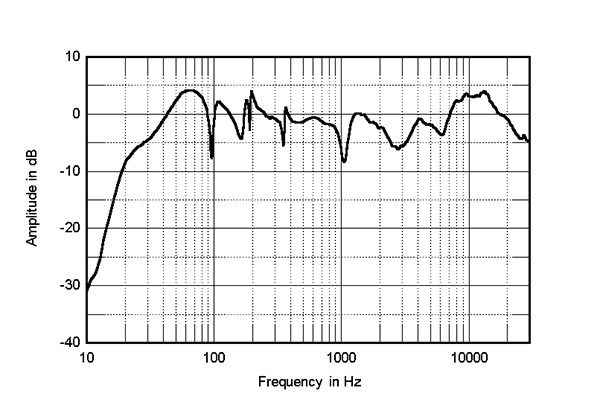My take:
Without prejudice to the fact that I am currently a card-carrying HARBETH disciple with their famous class-leading flat frequency response curve that measures in the top tier ….. and their best of breed midrange …… Just Fuhgeddaboud about all the textbook graphs and like shite, and just refer to your ears and senses in real life experiences.
For example:
In 1970, JBL released the iconic L100 Loudspeaker. Over the years, the L100 became the bestselling loudspeaker in JBL’s history. These were rock recording studio monitors with a roller-coaster and sine wave frequency response graph …..and everybody loved them.
These were everywhere in the early 1970s and onward, because they sounded great, thet were small compared to other speakers that sounded this good, and they played very loud without needing much power. (a perfect recipe for the college cohort budgets now buying the new gear)
The L100 was designed for rock & roll, efficiency, power handling, sine waves frequency responses (…heavy boosted treble, another peak in mids, AND a big boost in bass ) and sharp musical transients.
KEY POINT.
They were renowned as THE studio monitors in that era springing up in the west USA studios BECAUSE they dramatized / emphasized the recording industry engineers approach back then capitalizing on the prevailing music genre and purposely punching up the top, middle and bottom with peaks and valleys. Your favorite classic rock acts were probably recorded with JBL monitors, when L100s ruled the world.
Their easily identified sound, the so-called West Coast sound, was once a highly touted marketing feature.
- JBL speakers identified immediately as having a very pronounced treble peak
- JBL speakers as having a somewhat ragged and peaky midrange that could put the vocalist in your lap,
- booming bold bass
- Ad copy claimed that musicians and recording engineers were buying or stealing the original model 4310 (a professional studio monitor that preceded the L-100s) for home use.
- JBL did succeed in installing these monitors in most large recording studios in the 1970s, including Angel, Capitol, Deutsche Grammophon, Elektra, EMI, London/Decca, MGM, RCA, Reprise, Vanguard, and Warner Bros.
- Although they may have been responsible for some bad studio mixes from the ’70s and ’80s, even by today’s standards, they do amazingly well for a 3-way speaker with only 2 crossover components. Their relatively high sensitivity generates an incredible attack giving music an energy and presence that few other speakers could reproduce back then …


